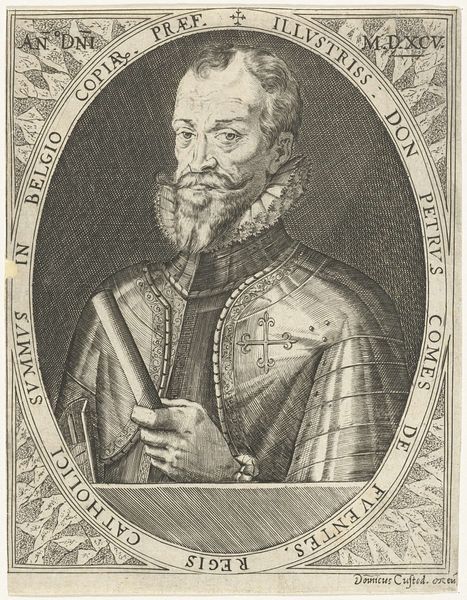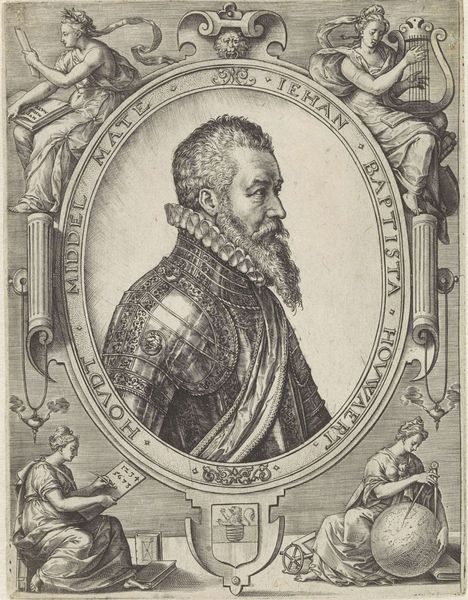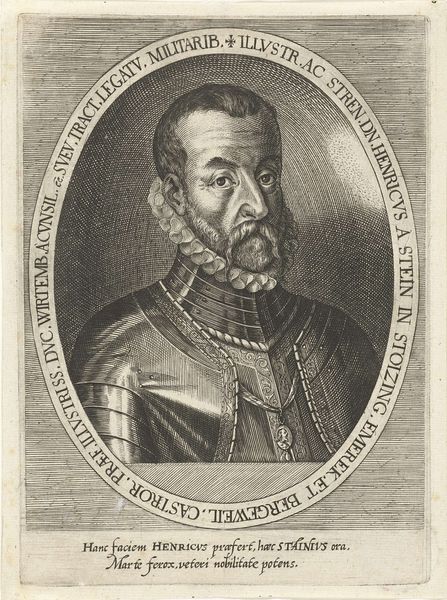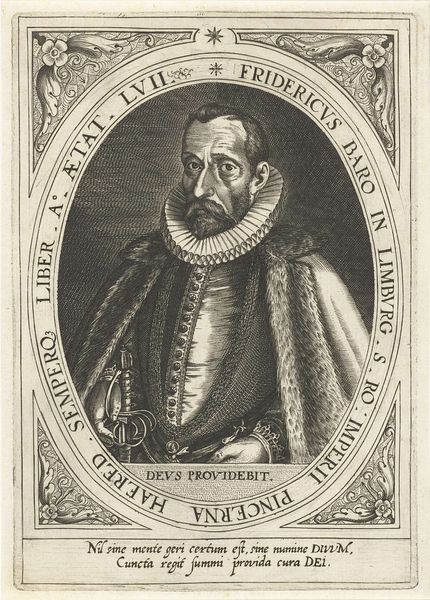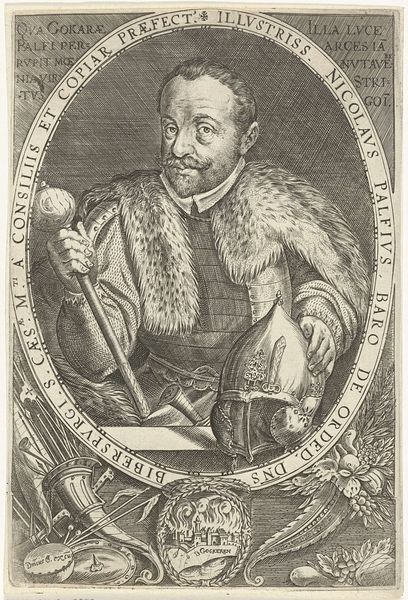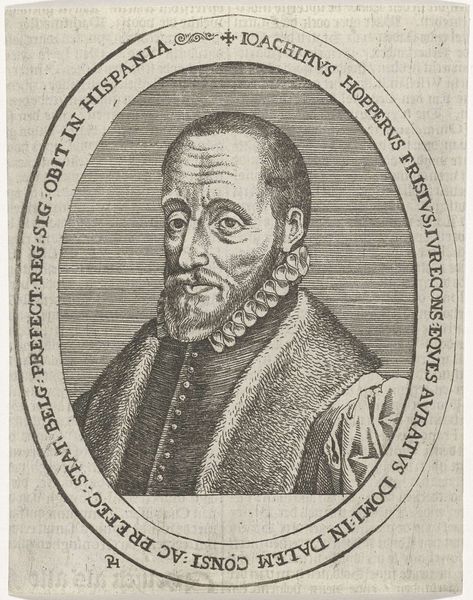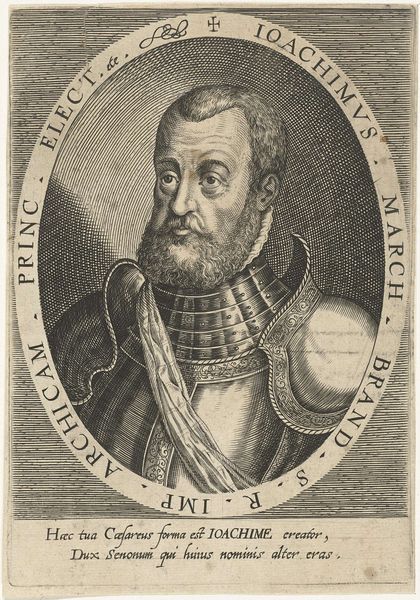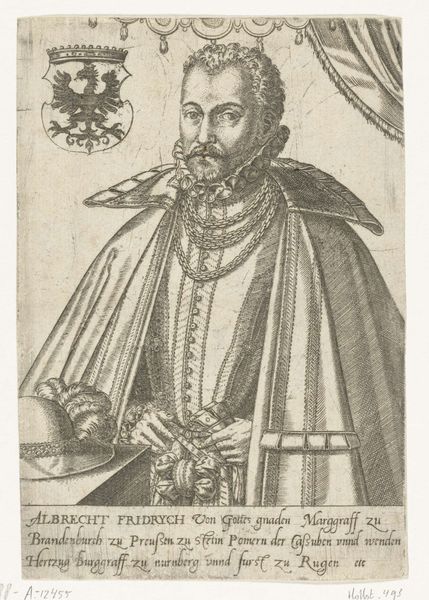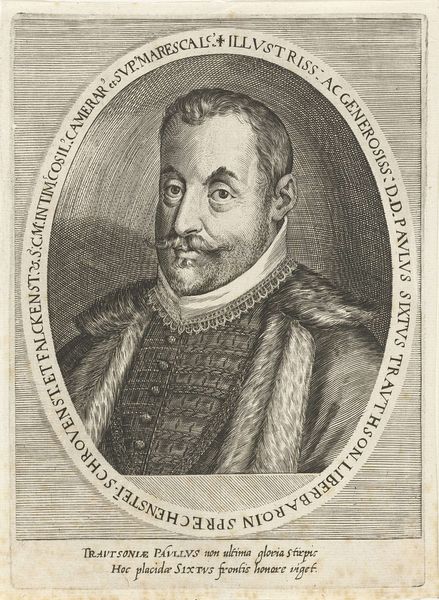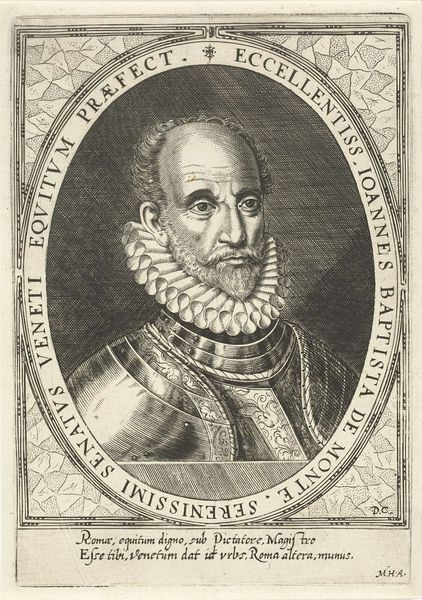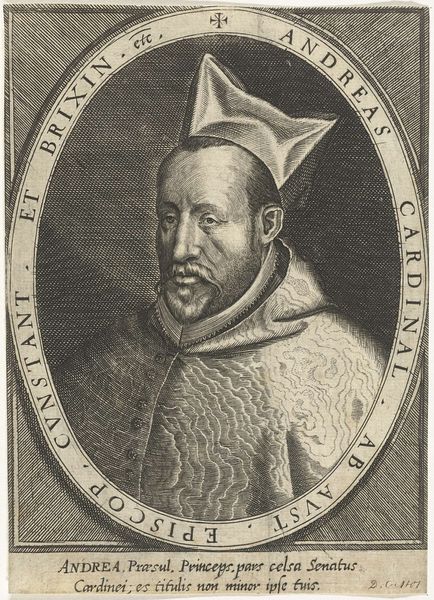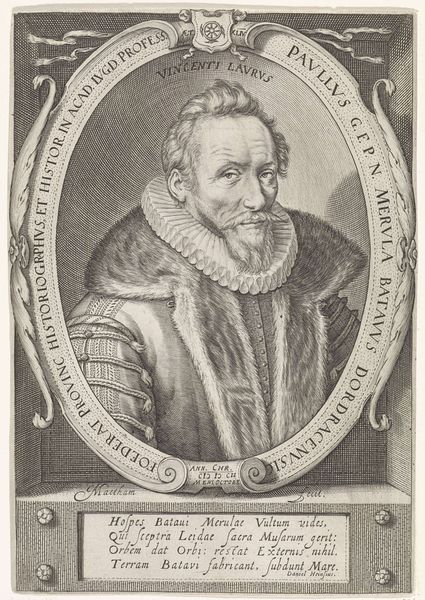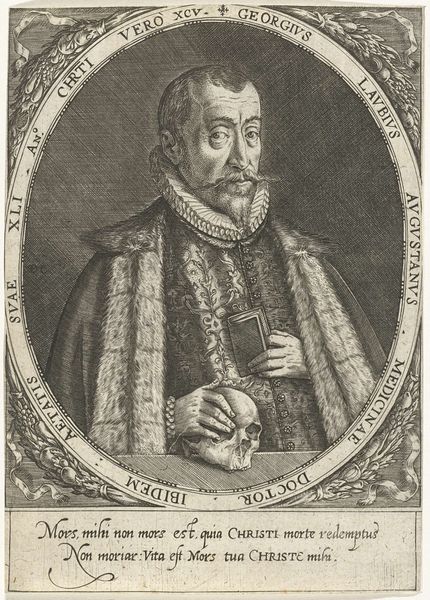
engraving
#
portrait
#
baroque
#
old engraving style
#
mannerism
#
11_renaissance
#
portrait reference
#
limited contrast and shading
#
portrait drawing
#
history-painting
#
engraving
Dimensions: height 156 mm, width 110 mm
Copyright: Rijks Museum: Open Domain
Curator: This is a remarkable engraving from 1601, titled "Portret van Justus Lipsius," created by Jan Baptist Zangrius. My initial impression is how the face seems to emerge from the background through densely worked lines. The figure is framed within an oval border which adds to this sensation. Editor: Indeed, it’s quite visually arresting, and it reflects Mannerist and Baroque influences so typical of that time. For me, the real fascination lies in how Zangrius achieved this likeness through the meticulous act of engraving, line by line, working the metal to capture the image of Justus Lipsius. This detailed work reminds me of the production effort involved. What was it like to create engravings at this time? What was the labor involved? Curator: Consider also how Justus Lipsius is presented here: as 'Professor Regius Historiographus'. We're not merely looking at a portrait, but an icon—a symbol of intellectual authority. Note the emblems surrounding the portrait in the four corners, they carry their own distinct meanings. The combination suggests much about Lipsius’s self-conception, but I cannot make them out completely. Editor: Absolutely, these symbols offer clues. But they're also meticulously crafted elements that must have been painstakingly added to the copper plate. The pressure required to make each mark, the layering of ink, and the selection of paper… it all speaks to the effort involved in circulating such imagery. It was about more than conveying information—it was making images. Curator: Precisely. And the choice of those specific images points towards the construction of identity. Lipsius is not simply a man but a figure carefully positioned within a historical and intellectual tradition. The gaze, the set of the mouth, and the lines framing the oval speak to this effect. The face gives an expression of quiet intellectual resolve that would resonate with the educated classes. Editor: This has certainly reframed how I appreciate this engraving. Initially drawn to the graphic process, I now see it deeply rooted in the conscious project of historical presentation. How this material engraving has functioned culturally—the role of imagery in intellectual life – is a fascinating perspective. Curator: I am so glad. Hopefully, others will look closer too.
Comments
No comments
Be the first to comment and join the conversation on the ultimate creative platform.
